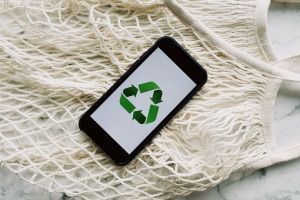5 Ways To Guarantee Sustainability In Your Business

One of the most important concepts that has been introduced to businesses is
the concept of sustainability
. It’s more relevant now than it has ever been in business, and it involves ensuring that the demands of social, environmental, and financial factors are achieved. Your business is just like any other in the sense that it doesn’t exist in a vacuum. Everything that you choose to do for your business will impact your staff and your clients, but it will also impact the environment. To be a success in the business world, you need to be able to see that you are only making changes that are sustainable and positive for those around you.
Every business goes through changes during its lifecycle, and you need to be sure that you are making the right ones. You need to be successful in your sustainable efforts, and that means conducting your operations in a way that ensures that you have the least negative impact on the environment. It’s one of the reasons that every industry has turned to technology. For example, the healthcare digital transformation has been huge, and it’s such that most healthcare businesses now have a better impact on the environment while being more efficient at the same time. When you do this as a business, you increase your revenues and you make your shareholders feel good to be associated with you.
As a sustainable business, you’re going to feel less pressure by environmental groups as you will already be doing your bit for the planet. You will also be able to make it easy for your business to survive in the current climate. So, if you want to guarantee your business as a sustainable one, check out these five tips:
Start At The Top
If you want to introduce sustainability to your business, it has to start at the very top of the chain . You cannot get your employees on board with your new plans if your management team is resistant. You need to go from department to department and implement change and make sure that your leaders are the first to champion the change. If you want to introduce digital technology to your business, you need to ensure that you have the support of those in charge. This will make a difference to the success of your operation. The culture of sustainability comes from those who support the idea of a better business, and if your employees aren’t on board, the whole house of cards will tumble.
Watch Your Resources To Engage Your Employees
Your business needs to achieve sustainability and if you want this to happen, you need to engage your employees so that you know that they are going to help you to accomplish your goals. Getting people on board with sustainability goals will help you to get your message across, so it’s a smart idea to initiate your projects so that everyone is on board with the ideas you have. Engagement is key for this to work, and that means funneling your resources into training. You want to know that you are educating people on waste reduction and prioritizing your actions for environmental initiatives, too.
Look At Your Current Processes
If you want to be sustainable, you should look at your current processes in your business and improve them. Look at how they currently work and tweak what you know works for your business so that it suits your new sustainable outlook. How are your current resources used ? Could you do better with that? Know your current protocols and adjust them to suit your new business initiatives – you won’t regret the effort that you make to do better. You can swap out your machinery used at work for sustainable and ethical options that you procure, too.
How’s Your Supply Chain?
Did you know that you could achieve sustainability goals through your current supply chain process? It’s not all about improving the social and environmental effects of your business. It’s so much more than that! You can use your supply chain to do better, and you can modify it with the changing environment, too. Your business can develop a policy that specifically focuses on obtaining of materials from sources that are more sustainable. You can streamline your processes better to achieve a positive environmental impact, too.
Review Over & Over
Lastly, you want to watch your new, sustainable initiatives to know that they are working. You should continually track these and as the results become evident over time, you can tweak them as needed. You cannot know that your new efforts are working unless you track them.


